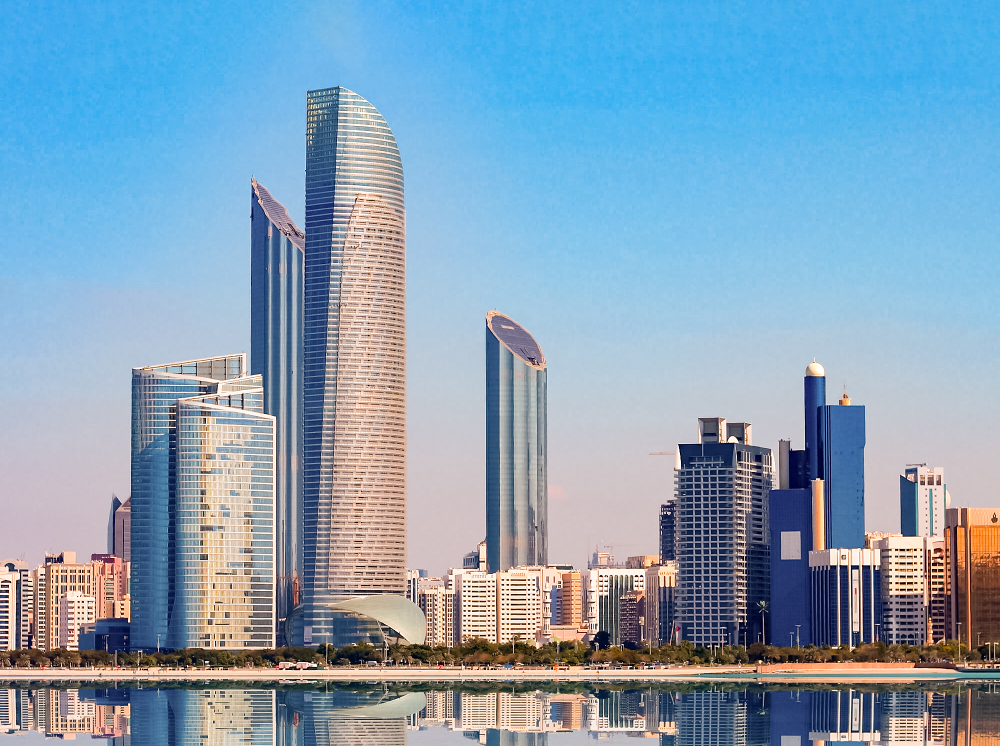Abu Dhabi’s real estate market saw a rise in transactions over Q3, with market activity continuing to gain pace following the easing of social distancing measures in May, according to the Chestertons’ Observer: Abu Dhabi Market Report Q3 2020.
Although apartment and villa sales prices continued to fall on average, the rate slowed to 0.6% and 0.2%, respectively. On an annual basis, average apartment prices fell by 4.8%, with villas seeing a decline of 4.7%.
Chris Hobden, Head of Strategic Consultancy, Chestertons MENA, said: “Abu Dhabi enjoyed a more active third quarter, with both sales prices and rental rates showing greater stability.
“COVID-19’s economic impact will undoubtedly continue to weigh on rental rates short-term, with improvements in residential market performance over 2021 largely contingent on a broader economic recovery.”
In the apartment sales market, all areas witnessed a quarterly price change between a 0.8% increase and a 2.1% decrease. Al Ghadeer once again saw the highest rates of decline q-on-q, falling by 2.1%, from AED700 per sqft to AED685 per sqft, followed by Al Reef which witnessed declines of 1.3% to AED740 per sqft.
In contrast, Al Raha Beach and Saadiyat Island saw a slight uptick in average prices. For Saadiyat Island, prices returned to their Q1 2020 average of AED1,380 per sqft, an increase of 0.7% on the Q2 value of AED1,370 per sqft. Al Raha Beach saw prices increase by 0.8% to AED1,225 per sqft, just below their first quarter average of AED1,230.
In the villa market, prices were broadly stable from the previous quarter, with Al Raha Beach seeing the sharpest q-o-q fall of 1.4%, to AED1,050 per sqft. Al Ghadeer and Al Reef witnessed slight increases of 0.7% and 0.8%, respectively. In Al Ghadeer, average prices stood at AED680 per sqft, with Al Reef at AED600 per sqft, up from AED595 per sqft in Q2.
From an annual perspective, all locations studied saw annual price drops of below 5%, other than Al Raha, which fell by 9.5%.
“The sales market has been buoyed by developer incentives and promotions, including extended post-handover payment plans and fee waivers. This, in conjunction with partnerships with banks to provide customers with access to preferential mortgage rates, has served to support transactions,” added Hobden.
Average rental rates continued to fall during Q3, albeit at a lower rate of decline, with apartment rates decreasing by 1% and villas by 0.5%. The highest average rental declines for apartments were seen in Muroor Area, where average rents fell by 3.4% on the previous quarter.
This was followed by Al Ghadeer, which saw the second-highest quarterly declines of 2.9%, predominantly driven by the decrease in rents for one-and two-bedroom units. Rents for one-bedroom apartments declined by 5% and two-bedroom units by 3.8%, averaging AED 38,000 and AED 50,000 per annum, respectively.
Khalifa City, Al Khalidiya and Mohammed bin Zayed City saw headline rents hold steady quarterly, with one-bedroom units available for AED40,000, AED65,000, and AED37,000, respectively. Corniche Road performed comparatively well q-o-q, falling by just 0.3%, driven by a 1.1% fall in average one-bedroom rents, which reached AED 90,000 per annum, down from AED 91,000 in Q2.
In the villa rental market, headline rents saw greater stability, with the highest quarterly fall standing at just 1.6%, in Al Khalidiya. Al Ghadeer, Al Reem Island and Mohammed bin Zayed City saw average rents hold steady over Q3 with average three-bedroom units standing at AED95,000, AED190,000, and AED105,000 per annum, respectively.
Al Reef and Khalifa City witnessed moderate falls of just 0.5%, with rates for three-bedrooms in the former averaging AED100,000 per annum and AED130,000 per annum in Khalifa City.
Average villa rents in Al Raha Gardens declined by 1%, with Al Khalidiya seeing a fall of 1.6% q-o-q. Average rents for three-bedroom units in Raha Gardens fell by 2.8%, to AED 140,000 per annum from AED 144,000 the previous quarter. Four-bedroom villa rents in Al Khalidiya reached AED 160,000 per annum, down from AED 168,000 over Q2.
“The flexibility shown by landlords on lease terms has been key to supporting the rental market over Q3. Multiple rental cheques are now widely expected by tenants, with payment through four to eight cheques, and in some cases, twelve, becoming increasingly common. Landlords continued to offer promotional rent-free periods and increasingly listed units with the option of shorter lease lengths,” said Hobden.
“With household incomes likely to remain under pressure, landlords will need to continue to demonstrate flexibility to both attract and retain tenants over Q4 2020,” he concluded.







